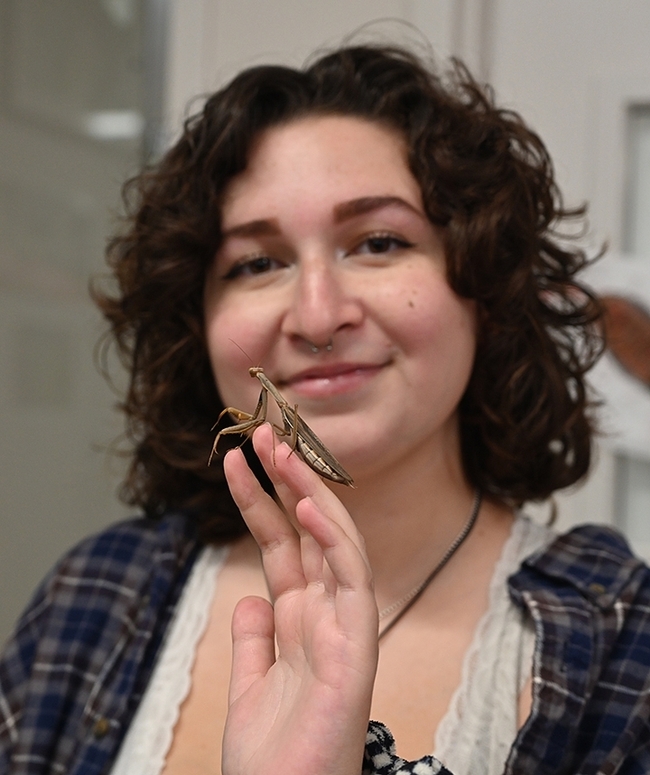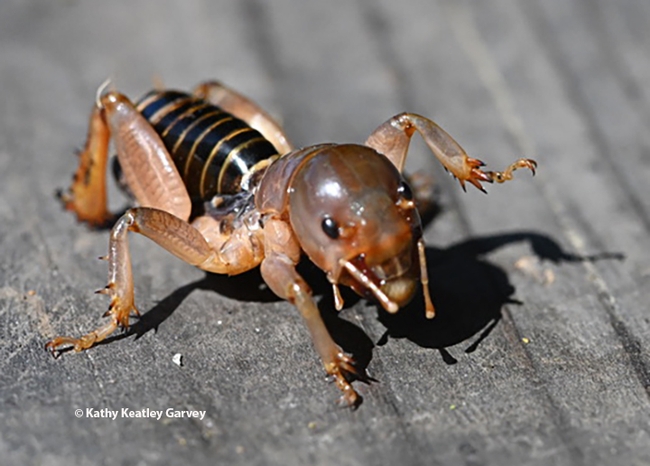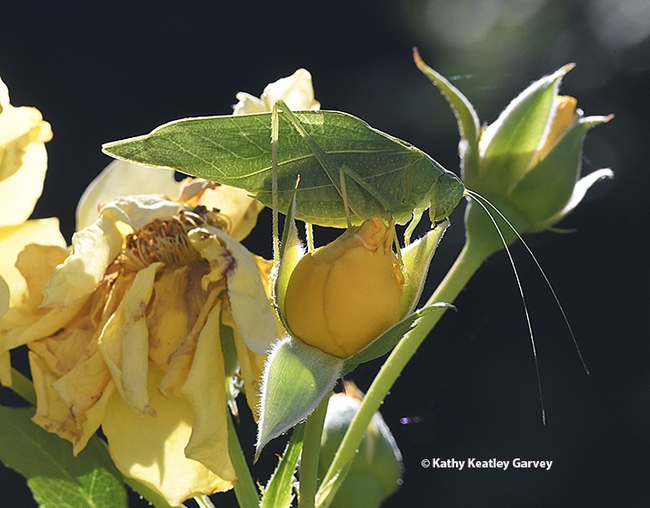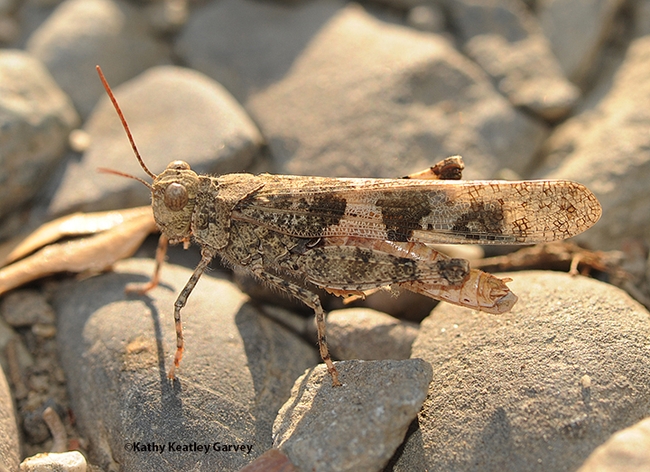
Themed "Grasshoppers, Crickets and Katydids," the open house will take place from 1 to 4 p.m., Sunday, March 3 in Room 1124 of the Academic Surge Building, 455 Crocker Lane, UC Davis campus. It's free and family friendly. Parking is also free.
UC Davis third-year entomology major Solea “Sol” Wantz, who triples as a curator intern at the Bohart Museum of Entomology, a student researcher in the lab of pollination ecologist and professor Neal Williams, and as president of the UC Davis Entomology Club, will discuss “Grasshoppers, Crickets and Katydids."
She'll deliver her presentation at 1 p.m., and questions and answers will follow. The venue: a classroom of the Museum of Wildlife and Fish Biology, located next to the Bohart Museum.
“I'll be giving a overview of all of the major and most interesting--in my opinion--families of Orthoptera," she said. The order includes some 20,000 species worldwide.
A few factoids she related:
- The katydid genus Supersonus produces the highest frequency sound of any known animal, up to 150 kHz! For reference, humans can only hear between 0 and 20 kHz.
- The family Myrmecophilidae, the “ant-loving crickets” are tiny, wingless crickets that live only in ant nests. “We even have these here in Davis, but they're hard to find unless you're digging through ant colonies,” Wantz says.
- Jerusalem crickets, also known as "potato bugs," have a unique method of sound production. "Rather than using their wings (they are actually wingless, she says) or another sound-producing organ, these crickets thump their abdomen against the ground to produce a surprisingly loud noise. Their thumping patterns can be used to identify their species."

“It's actually a grasshopper defense mechanism!” Wantz says. “When under stress--usually when they are grabbed, especially around the thorax-- grasshoppers vomit a foul-smelling/tasting liquid to ward off whatever predator is attacking them.”
Orthoptera (in ancient Greece, “ortho” means "straight,” and “optera” means "wings") is an order that includes grasshoppers, crickets, locusts and katydids. Grasshopper belong to the suborder Caelifera, and crickets and katydids to Ensifera.
Wantz, who decided at age 6 that she wanted to become an entomologist, is currently re-curating and reorganizing the Bohart's collection of several thousand specimens of Orthoptera.
"After finishing my undergraduate degree at UC Davis, I aim to enter a graduate program, potentially to explore my newfound interest in systematics. Ultimately, I hope to become a professor of entomology and lead my own research lab. This appeals to me because it presents the opportunity to weave together my knowledge of wild bee ecology and conservation, love of Orthoptera and museum work, and emphasis on professional outreach and public engagement."
The Bohart Museum, directed by Professor Jason Bond, houses a global collection of eight million insect specimens, plus a live petting zoo (Madagascar hissing cockroaches, stick insects, tarantulas and more) and an insect-themed gift shop stocked with T-shirts, hooded sweatshirts, books, posters, jewelry and insect-collecting equipment.
For more information, access the Bohart website at https://bohart.ucdavis.edu or contact bmuseum@ucdavis.edu.
Attached Images:

